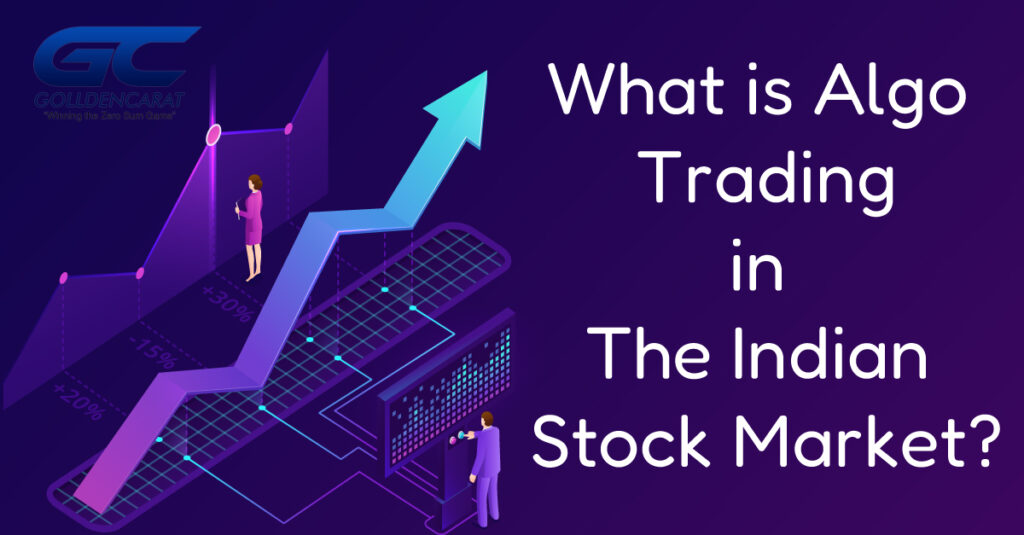What is algo trading in the Indian stock market?

An algorithm is a specific set of instructions designed to carry out a task or process. And there are times when a human trader cannot handle a large number of trades and requires the assistance of a smart algorithm.
Algorithms have grown in popularity in the online trading landscape, and they are in high demand from many large clients. These mathematical algorithms analyze every stock market quote and trade, identifying liquidity opportunities and converting the data into smart trading decisions. Algorithmic trading, also known as computer-driven trading, reduces transaction costs and empowers investment managers to manage their trading processes. Algorithm innovation continues to produce returns for companies with the scale to absorb the costs while reaping the benefits.
Algo trading (also known as automated trading, black-box trading, or simply algorithmic trading) is the process of using computers programmed to perform a trade in order to generate profits at a speed and frequency that a human merchant cannot match. Any algo trading strategy necessitates the identification of a profitable opportunity, either in terms of increased profits or cost reduction. Algorithmic trading strategies are based on time, price, quantity, or any mathematical model and follow defined sets of rules. Aside from profit opportunities, algorithmic trading makes markets more liquid and trading more systematic by eliminating human emotional influences on trading activities.
Assume a trader follows the following simple trading criteria:
When a stock’s 100-day moving average exceeds its 200-day moving average, buy 100 shares.
When the stock’s 100-day moving average falls below the 200-day moving average, sell shares.
A computer programme can be written using this set of two simple instructions to automatically monitor the stock price (and moving average indicators) and place buy and sell orders when certain conditions are met. Manual intervention is not required in this case. The trader is no longer required to monitor live prices and charts or place orders. This algorithm efficiently does his work for him.
There are numerous advantages to algo trading.
1. Trades are carried out at the best possible prices.
2. Immediate and precise trade order placement
3. Correctly timed and instantaneous operations Significant price changes are avoided as a result.
4. Lower transaction costs as a result of reduced human intervention
5. Automated checks on multiple market conditions at the same time
6. Less chance of manual errors when placing trades
7. Less chance of human traders making mistakes due to emotional and psychological factors.
High-Frequency Trading accounts for the majority of today’s algorithmic trading (HFT). Based on programmed instructions, this trading method tries to profit by placing a large number of orders at very fast speeds, across multiple markets and decision parameters.
Algorithmic trading can be used in a variety of trading and investment activities, including:
Medium- and long-term investors or buyout firms (pension funds, mutual funds, insurance companies) that buy in bulk but do not want to influence share prices through discrete, high-volume investments.
Short-term traders and sell-side participants (market makers, speculators, and arbitrageurs) benefit from automated trade execution; additionally, algorithmic trading aids in the creation of sufficient liquidity for market sellers.
Systematic traders (trend followers, pairs traders, hedge funds, and so on) find it far more efficient to programme their trading rules and let the programme trade for them.
Automated trading is a more systematic approach to active trading than methods based on the intuition or instinct of a human trader.
The following conditions must be met to participate in algo trading.
A computer programme that is capable of reading current market prices.
The LSE and AEX price
An exchange rate feed is a feed for the exchange rate.
Capability to place orders and route them to the appropriate exchange
Back-testing on historical price feeds is possible.
However, to be a wise investor, we must first understand the risks and challenges. For example, the risks of system failure, network connectivity errors, trade order, and execution delays, and, most importantly, imperfect algorithms. Keep in mind that if you can take an algorithm-generated trade, so can other market participants. As a result, prices fluctuate in milliseconds and even microseconds. The more complex the algorithm, the more stringent the post-testing required before putting it into practise.





